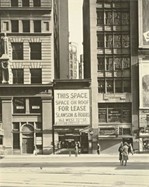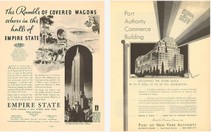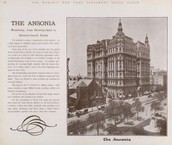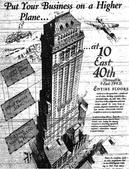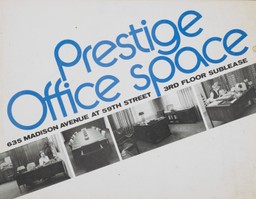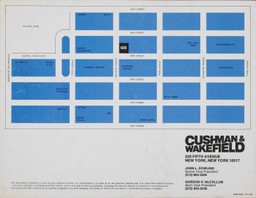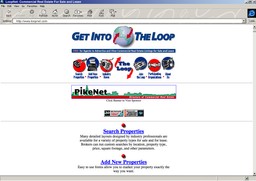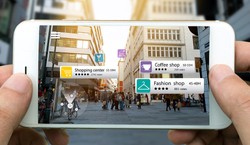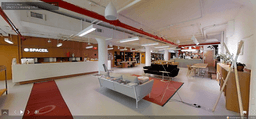
Marketing Best Practices
The Evolution of Commercial Real Estate Marketing
Commercial real estate marketing has evolved from simple building signage to sophisticated multi-channel digital campaigns.
Here’s a history of how commercial real estate advertising has advanced through the decades, to the technological tipping point we’re at today.
Early 1900s: Signs that State
In the early 1900s real estate marketing was simple: get the passer-by’s interest with eye catching signage – ironically in the kind of vintage fonts that you’d find in hip offices now.
Still used online?
Pay-per-click advertising is pretty similar.
But instead of targeting a diverse crowd walking down the street, they target specific people who are searching for a commercial property on search engines like Google – then appear as Ads above the results.
1920s-50s: Print ads that Persuade
You could argue that print advertising began as far back as BC.
But print ads became widespread and influential in the early 1900s, when paper and magazine circulations hit the mass market.
Commercial real estate listings from this era are persuasive, with strong slogans and language to grab attention.
Still used online?
With so much information online, display ads have to be bold and persuasive to attract readers’ attention quickly. But marketers can now rely on sophisticated analytics to deliver them to targeted audiences.
1960s – 1990s: Direct-Marketing that Delivers
Commercial real estate marketers could take a step back from the scattergun and use more targeted, database-led approaches.
Direct marketing methods (e.g. direct, flyers, postcards, direct response ads etc.) were ways to let qualified people know about commercial properties of interest – based on demographics like location, income or age.
Many of these methods are still used today. But, in a way, direct marketing was the start of the modern marketing methods that are now used online.
Still used online?
Email Marketing lands in your inbox and there are a lot of lists and (big) data behind campaigns to make sure that they’re targeted and read by relevant people.
1990s – early 2000s: Sites that Show
Today the Internet is less a thing and more an integrated part of everyday life. The key change for real estate marketing with the emerging internet use was in the passing of power to the user.
Visitors could search, find and choose what commercial real estate listings to look at – and when – with more property content than ever before.
This was a step towards the tailored, immersive real estate marketing that we’re starting to see now.
LoopNet is one of the biggest and best commercial property websites, with over 800,00 listings.
Here’s how the site looked in 1996.
Still used online?
Today a website is a necessity and not just an advantage and the commercial real estate industry has made great steps to bring their business online.
Today: Websites (& Apps) that Wow
While some relics remain online, today’s commercial real estate website design real estate websites are for the most part impressive places to promote properties. The ugly sites of old, with swathes of white space and glaring blue hyperlinks, are now sleek, fully-featured platforms.
The best examples blur the boundaries between information and experience, there’s so much detail. But it’s not just about aesthetics – it’s also about usability and convenience.
Here’s how SharpLaunch websites look on a desktop.
Still used online?
Yep, great websites are now critical and the emergence of new commercial real estate marketing software can attest that there are challenges that are just waiting to be solved.
The Future: Innovations that Immerse
Technology has transformed the marketing of CRE. So how might showcasing a property change in the future? We can argue that immersive and experiential tech is the next big thing:
3D Tours
Floored offers immersive, interactive web-based 3D environments in a videogame-like experiences for commercial, residential, and retail projects.
Below you can explore a 3D view of a Hines building lobby.
Augmented reality
Augmented reality allows an in-depth view of a property, neighborhood or trade area to transform from a 2D static image into a 3D experience through a visualizing device such as a phone or tablet. It can viewed from different angles, sliced to reveal the layout of different floors, or show additional layers of data not limited only to the view a camera can capture.
Virtual Reality
Virtual reality technology is slowly entering our everyday lives and the possibilities of its application to real estate are very exciting. The possibility of a virtual walkthrough of a property is now possible with headsets like Oculus Rift and technologies like Matterport‘s 3D photography.
Companies will be able to capture remote customers and do showings off site or offer showings of completed construction projects.
See below a virtual walkthrough the Spaces Co-working office.
Related Blog Posts
CRE Technology
5 Reasons Why Salesforce Needs a CRE Marketing Platform
Salesforce isn’t only the most widely used CRM, it’s also the leading choice in the...
Company updates
Streamline Your Outreach with Tag-Based Email Campaigns
We are thrilled to announce the launch of our new Tag-Based Email Campaign feature, designed...
Company updates
SharpLaunch Announces New Integration with LandSearch
We’re excited to announce a groundbreaking integration with LandSearch, a prominent online...

